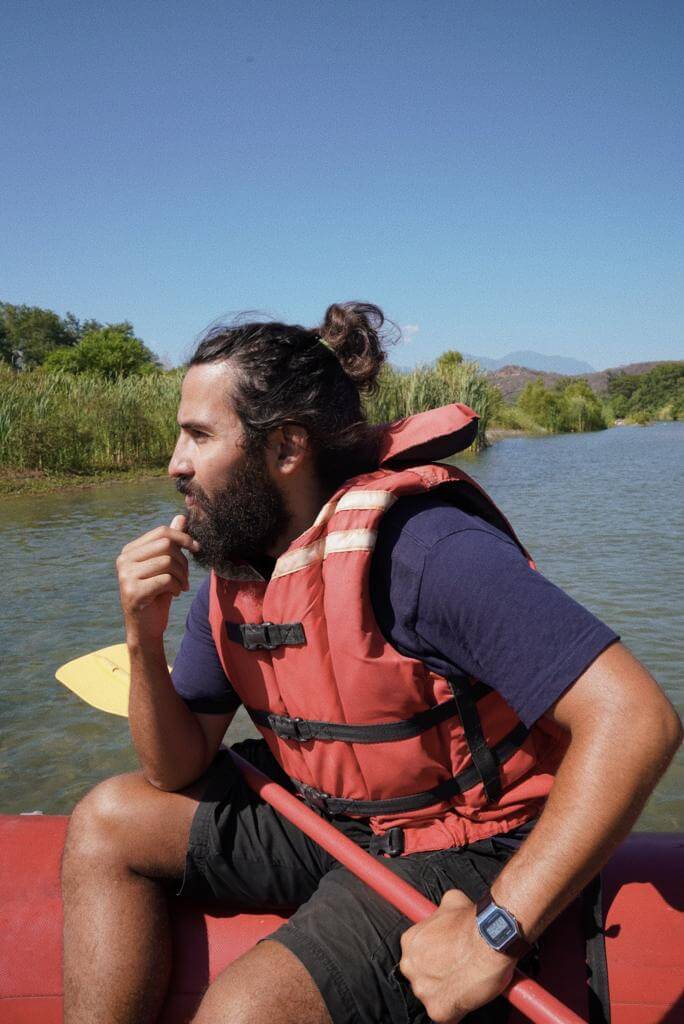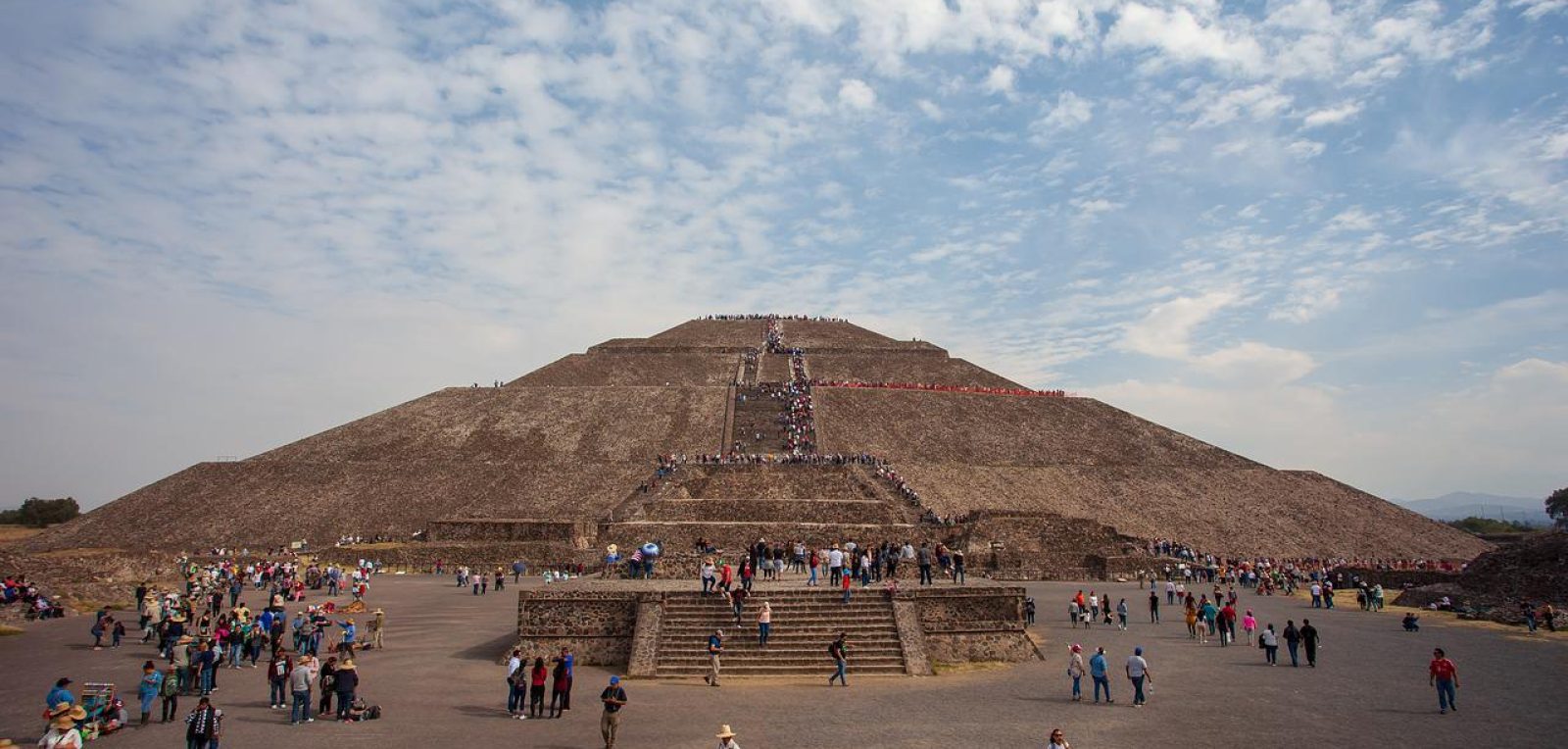Ready for your next big trip to Spain, Mexico, or any other Spanish-speaking country? Check out this nifty list of must-know Spanish travel vocabulary to make sure you’re well prepared.
Essential Spanish for travelers
You’ve packed your bags, booked the flight, and quadruple-checked that your passport is in your pocket: you’re ready for that dream trip to Spain! How’s your Spanish, though?
Fret not! We’ve got you covered with this handy list of essential Spanish travel vocabulary. Keep it close as it’ll surely help you during your travels. Besides, trust us, making the effort to talk to locals in their own language will make the adventure much more memorable.
You can use the index below to jump between sections.
- A note on Spanish travel phrases
- Spanish greetings
- Phrases for everyday use
- Moving around and directions
- At the hotel
- At the restaurant
- Spanish phrases for emergencies
A note on Spanish travel phrases
To make sure these phrases stick, and that you don’t just try to memorize their translations, create your own personalized flashcards to learn them better and remember them longer. You can easily make your own flashcards in our app.
Also, if you do have travel plans to a Spanish-speaking country, you can talk about them – or about anything else you’re interested in – with a private language tutor. All you have to do is sign up to our Live Coaching program and get practicing with a pro before your big trip!
Lastly, don’t forget to check out our How To Learn Spanish guide for all of your Spanish language learning needs.
With that out of the way, here’s some essential Spanish travel vocabulary to get you all set up.
(Hint: We added the IPA transcription (International Phonetic Alphabet) next to each word and phrase. If there are two, the first will belong to the Latin American pronunciation, and the second to the Castilian pronunciation.)

Image by Danor Aharon from Pixabay
Spanish greetings
Generally, people in Spanish-speaking countries are friendly and welcoming. Don’t be afraid to use these greetings in daily interactions – they’ll be greatly appreciated!
1) Hola [ˈola]
This is your go-to way to say “hello” in Spanish.
2) ¿Cómo estás? [ˈkomo ɛsˈtas]
You’ll hear this in combination with the first word on this list as, Hola, ¿cómo estás? This means “Hello, how are you?” in Spanish.
You can use está instead of estás to greet someone in a formal setting.
3) Bien, gracias [ˈbjɛ̃n ˈɡɾasjas] or [ˈbjɛ̃n ˈɡɾaθjas]
This can be used as an answer to ¿Cómo estás?, and it means “Good, thank you.”
4) Mucho gusto [ˈmuʧo ˈɣusto]
Tell someone it’s “Nice to meet you” by saying Mucho gusto.
You’re bound to meet tons of new people on your trip, so we’ve added a few introductory phrases in this Spanish travel vocabulary list.
5) ¿Cómo te llamas? [ˈkomo te ˈʝamas] or [ˈkomo te ˈʎamas]
Say this to ask someone’s name. You can change the te for a se to use it in a formal setting.
6) Mi nombre es [mi ˈnõmbɾe ˈɛs]
This means “My name is.” All you need to do is add your name after the es.
7) Soy de [ˈsoi̯ ðe]
Lastly, use soy de, and add the country or place you’re from, to tell people about your native place. It’s usually the answer to ¿De dónde eres?, which means “Where are you from?” in Spanish.
- ¿De dónde eres? [de ˈðõnde ˈɛɾes] (Where are you from?)
- Soy de Brasil. [ˈsoi̯ ðe βɾaˈsil] (I’m from Brazil.)
Depending on the time of day, you can use any of the following phrases:
8) Buenos días [ˈbwenos̬ ˈðias]
Use this during the morning – it means “good morning.”
9) Buenas tardes [ˌbwenas ˈtaɾðes]
Right after 12pm, you can switch to Buenas tardes, which means “good afternoon.”
10) Buenas noches [ˌbwenas ˈnot͡ʃes]
Use Buenas noches to either greet someone at night, or to tell them you’re going to bed.
Last but not least, any list of Spanish travel vocabulary would be incomplete without “please” and “thank you.”
11) Por favor [poɾ faˈβoɾ]
Por favor is the Spanish “Please.” Make sure you add this when you ask for something, say, a beer.
- Una cerveza, por favor. [ˈuna sɛɾˈβesa poɾ faˈβoɾ] or [ˈuna θɛɾˈβeθa poɾ faˈβoɾ] (One beer, please.)
12) Gracias [ˈɡɾasjas] or [ˈɡɾaθjas]
Add sí or no before gracias to avoid confusion when accepting or rejecting an offer.
That’s it for greetings! Now let’s move on to phrases for everyday use.
Phrases for everyday use
13) Me gustaría [ˈme ɣustaˈɾia]
This is how you say “I would like” in Spanish. If you’re asking for a thing, say, a train ticket, make sure to add a por favor at the end.
- Me gustaría un boleto de tren, por favor. [me ɣustaˈɾia ũ̯m boˈlɛto ðe ˈtɾɛ̃n poɾfaˈβoɾ] (I would like a train ticket, please.)
14) ¿Cuánto cuesta esto? [ˈkwãnto ˈkwɛsta ˈɛsto]
You can point at something you want to buy and say this to ask “How much does this cost?”
15) ¿Cómo se dice esto en Español? [ˈkomo se ˈðise ˈɛsto ɛn ɛspaˈɲol] or [ˈkomo se ˈðiθe esto en espaˈɲol]
If you want to know how to say something in Spanish, all you need to do is ask ¿Cómo se dice esto en Español?, or “How do you say this in spanish?”
16) ¿Puedes hablar más despacio? [ˈpweðes aˈβlaɾ ˈmas̬ ðɛsˈpasjo] or [ˈpweðes aˈβlaɾ ˈmas̬ ðɛsˈpaθjo]
At times, locals will talk faster than what you’re used to hearing. If that happens, use this phrase to ask “Can you speak more slowly?”
17) ¿Hablas inglés? [ˈaβlas ĩnˈɡles]
If an emergency comes up and you need to switch to English, say this to ask “Do you speak English?”
18) ¿Qué hora es? [ˈke ˈoɾa ˈɛs]
Running late? Find out by asking ¿Qué hora es? or “What time is it?”
19) ¿Tiene? [ˈti̯ene]
This handy one-word phrase means “Do you have…?” Add any noun with its respective indefinite article to ask if it’s available.
- ¿Tiene un baño? [ˈti̯ene ũm ˈβaɲo] (Do you have a bathroom?)
20) No tengo/Sí tengo [ˈno ˈtɛ̃nɡo] / [ˈsi tɛn.ɡo]
In response to the question above, you’ll either hear no tengo or sí tengo, which mean “I do not have” and “I do have,” respectively.
Moving around and directions
You’re probably planning a lot of moving around and sightseeing during your trip, so we’ve added some top-notch phrases to our Spanish travel vocabulary list to help you ask for directions.
21) ¿Dónde está? [ˈdõndɛ ɛsˈta]
This is the general way of asking “where is?” in Spanish. Add any location after está – it can be a bathroom, the cinema, or a museum – to ask specifically where something is located. Here are some key locations you’ll probably look for:
- El baño [ɛl ˈβaɲo] (the bathroom)
- El hotel [ɛl oˈtel] (the hotel)
- El restaurante [ɛl restauˈɾante] (the restaurant)
- El hospital [ɛl ospiˈtal] (the hospital)
- El parque [ɛl ˈpaɾke] (the park)
- El bar [ɛl baɾ] (the bar)
- La calle [‘la ˈkaʎe] or [‘la ˈkaʝe] (the street)
- El aeropuerto [ɛl aɛɾoˈpwɛɾto] (the airport)
- La terminal [‘la t̪eɾ.miˈnal] (the terminal)
22) La estación de [‘la ɛstaˈsjõn de] or [‘la ɛstaˈθjõnde]
In case you’re looking for a station of sorts, you can add la estación de to the last question, along with the specific form of transport.
- ¿Dónde está la estación de autobuses? [ˈdõndɛ ɛsˈta ‘la ɛstaˈsjõn de au̯toˈβuses] (Where is the bus station?)
- ¿Dónde está la estación de trenes? [ˈdõndɛ ɛsˈta ‘la ɛstaˈsjõn de ˈtɾɛ̃nɛ̃s] (Where is the train station?)
Here are some responses you might get after your questions:
- A la derecha [a la deˈɾet͡ʃa] (to the right)
- A la izquierda [a la iθˈkjeɾda] (to the left)
- En la esquina [en la esˈkina] (on the corner)
At the hotel
You have to sleep somewhere, right? Here’s some Spanish travel vocabulary you can use in hotels:
23) Quiero hacer una reservación [ˈkjɛɾo aˈsɛɾ ˈuna resɛɾβaˈsjõn]
Say this phrase to mean “I’d like to make a reservation” in Spanish.
24) ¿Tiene habitaciones disponibles? [ˈtjene aβitaˈsjones̬ ðispoˈniβles]
Doing a walk-in, AKA, you forgot to make a reservation? Ask, “Do you have rooms available?” with the above phrase.
25) Tengo una reservación bajo el nombre [ˈtɛ̃nɡo ˈuna resɛɾβaˈsjõm ˈbaxo elˈnõm.bɾe]
This phrase means “I have a reservation under the name” All you need to do is add the name the reservation is under right after nombre. For example:
- Tengo una reservación bajo el nombre Carlos Mena. [ˈtɛ̃nɡo ˈuna resɛɾβaˈsjõm ˈbaxo el ˈnõm.bɾe ˈkaɾ.los ˈmeːnä] (I have a reservation under Carlos Mena.)
26) Necesito ayuda con mis maletas [neseˈsito aˈʝuða kõm mis̬ maˈlɛtas]
Traveling with a bunch of suitcases? Say, “I need help with my bags” with this phrase.
27) ¿Cuál es el número de mi habitación? [ˈkwal ˈɛs̬ ɛl ˈnu.me.ɾo de mj aβitaˈsjõn]
This is how you ask for your room number. Below is a handy table with the numbers in Spanish from 1 to 10, along with their pronunciation. For numbers beyond 10, check out this article about Spanish cardinal numbers.
| Number | Pronunciation |
| 1 | uno [ˈuno] |
| 2 | dos [ˈdos] |
| 3 | tres [ˈtɾes] |
| 4 | cuatro [ˈkwatɾo] |
| 5 | cinco [sĩnko] or [ˈθĩnko] |
| 6 | seis [ˈsei̯s] |
| 7 | siete [ˈsje.t̪e] |
| 8 | ocho [ˈot͡ʃo] |
| 9 | nueve [nwe.β̞e] |
| 10 | diez [ˈdjes] or [ˈdjeθ] |
At the restaurant
You need to eat as well, right? This next set of Spanish travel vocabulary can be used in any restaurant.
28) ¿Puedo ver su menú? [ˈpweðo ˈβɛɾ su meˈnu]
Ask for a restaurant’s menu by asking ¿Puedo ver su menú?
29) Tengo una alergia [ˈtɛ̃nɡo ˈuna aˈlɛɾxja]
Do you have a food allergy? It’s a good idea to keep this Spanish phrase at hand, as it’s how you say “I have an allergy.” Add a and the food you’re allergic to at the end to specify the allergen.
- Los mariscos [los̬ maˈɾiskos] (seafood)
- Los lácteos [los̬ ˈlak̚teos] (dairy)
- Tengo una alergia a los mariscos. [ˈtɛ̃nɡo ˈuna aˈlɛɾxja a los̬ maˈɾiskos] (I have a seafood allergy.)
30) Soy vegetariano [ˈsoi̯ βexɛtaˈɾjano]
Nowadays, most restaurants have vegetarian options. Let a restaurant know you’re a vegetarian by saying Soy vegetariano. Because Spanish nouns are gendered, you’ll need to say either vegetariano or vegetariana to specify male or female, respectively.
Are you a vegan? Let the restaurant know by saying either Soy vegano [ˈsoi̯ beˈɣano] or Soy vegana [ˈsoi̯ beˈɣana].
31) No como [ˈno ˈkomo]
Similar to the allergy disclaimer, you can say No como, which literally means “I do not eat,” and then add a food to specify what you don’t eat. Here are some examples.
- No como carne de cerdo. [ˈno ˈkomo ˈkaɾne ðe ˈseɾ.ð̞o] (I don’t eat pork.)
- No como carne de res. [ˈno ˈkomo ˈkaɾne ðe res] (I don’t eat beef.)
32) La cuenta, por favor [la ˈkwɛ̃nta poɾ faˈβoɾ]
Ask for the check by saying La cuenta, por favor, or “The check, please.”
33) Una mesa, por favor [ˈuna ˈmesa poɾ faˈβoɾ]
Asking for a table is as easy as saying Una mesa, por favor.
34) Un vaso de agua, por favor [ũm ˈbaso ðe ˈaɣwa poɾ faˈβoɾ]
The last phrase in this section, ask for a glass of water by saying Un vaso de agua, por favor.
Spanish phrases for emergencies
Last but not least, we added emergency phrases in this Spanish travel vocabulary list. Better to have them and not need them, than to need them and not have them!
35) Necesito ayuda [neseˈsito aˈʝuða] or [neθeˈsito aˈʝuða]
The general way of asking for help, Necesito ayuda means “I need help” in Spanish.
36) Necesito un baño [neseˈsito ũ̯m ˈbaɲo] or [neθeˈsito ũ̯m ˈbaɲo]
A phrase everyone should know in every language, Necesito un baño means “I need a bathroom” in Spanish.
37) Necesito un doctor [neseˈsito ũ̯n dok̚ˈtoɾ] or [neθeˈsito ũ̯n dok̚ˈtoɾ]
If you’re looking for a doctor, use Necesito un doctor to say “I need a doctor.”
38) No me siento bien [ˈno me ˈsjɛ̃nto ˈβjɛ̃n]
Let someone know you’re not feeling well by saying No me siento bien.
39) Necesito una farmacia [neseˈsito ˈuna faɾˈmasja] or [neθeˈsito ˈuna faɾˈmasja]
If you need to find a pharmacy, say Necesito una farmacia.
40) Tuve un accidente [ˈtuβe u̯n aksiˈðɛ̃nte] or [ˈtuβe u̯n akθiˈðɛ̃nte]
If you’ve been in an accident, let people know by saying Tuve un accidente.
41) Me duele [me ˈðwele]
Lastly, for general body aches, you can say Me duele, or “My ___ hurts.” To specify what hurts, you can add the painful body part after duele. Below are some common sources of pain:
- La cabeza [la kaˈβesa] or [la kaˈβeθa] (the head)
- La espalda [la ɛsˈpalda] (the back)
- La garganta [la ɣaɾˈɣãnta] (the throat)
- El brazo [ɛl ˈβɾaso] or [ɛl ˈβɾaθo] (the arm)
- La pierna [la ˈpjɛɾna] (the leg)
And there you have it: the ultimate survival phrase guide for your Spanish adventures. Enjoy your holidays and buen viaje! [ˈbwɛ̃m ˈbjaxe]





